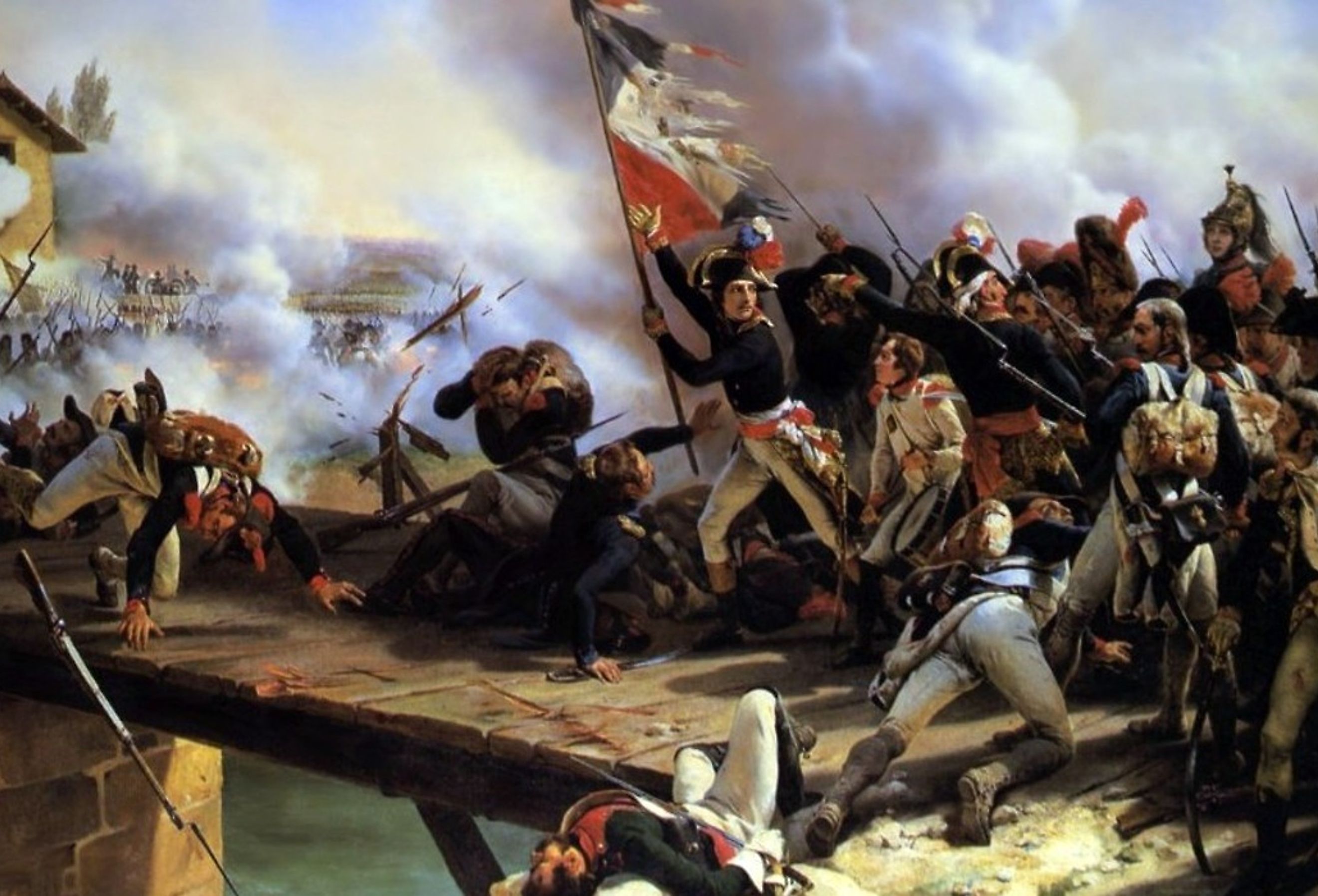
War of the First Coalition
As divisive as politics can be between countries today, in the late 18th century, a single disagreement was an excuse for destruction and warfare on a scale not seen until the World Wars. Tight alliances meant that a small, isolated disagreement exploded into a continental war throughout Europe. The result was the War of the First Coalition, which occurred between 1792 and 1797. The French Monarchy had fallen to revolution and predatory neighbors desired to conquer and divide the seemingly vulnerable country. However, the leaders of the First French Republic proved to be a more formidable obstacle than the invading First Coalition forces realized.
The Belligerents
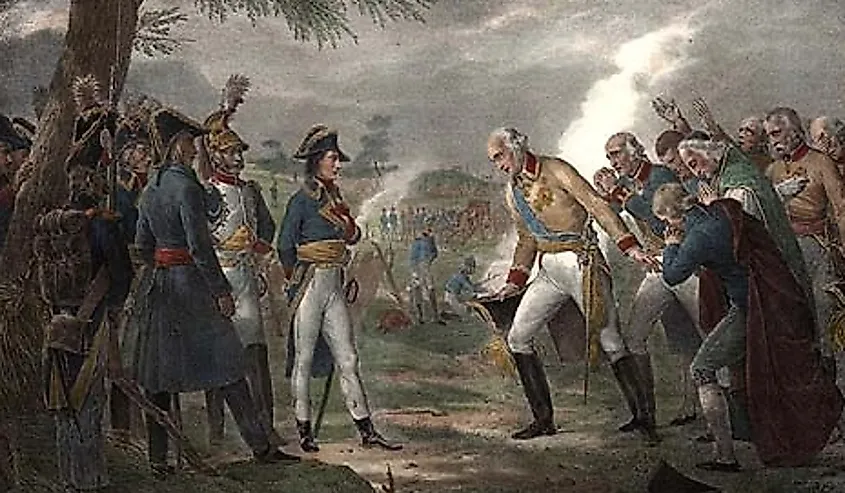
Notably, many of the forces invading France were not typically aligned. The preceding centuries saw many treaties and alliances devolve into hostilities, depending on the changing economic and political climate. The long-term enemies of the French Republic in the First Coalition were Great Britain, the Papal States, and the Holy Roman Empire (which consisted of Austria and several vassals). Other states, like Parma, Sardinia, and The Kingdom of the Two Sicilies, withdrew in 1796.
Spain antagonized France until 1795 when they established an alliance and the Spanish navy aided French interests. The Dutch Republic and a few scattered states withdrew from the First Coalition before 1796, ousted through fatigue, diplomacy, or military defeat. Within France, Royalist forces consisted of those who remained aligned with the deposed French Monarchy. The Batavian Republic and a handful of Sister Republics assisted France throughout the war, which is significant because it exposes a theme of opposing government ideologies: monarchy versus republic.
Background
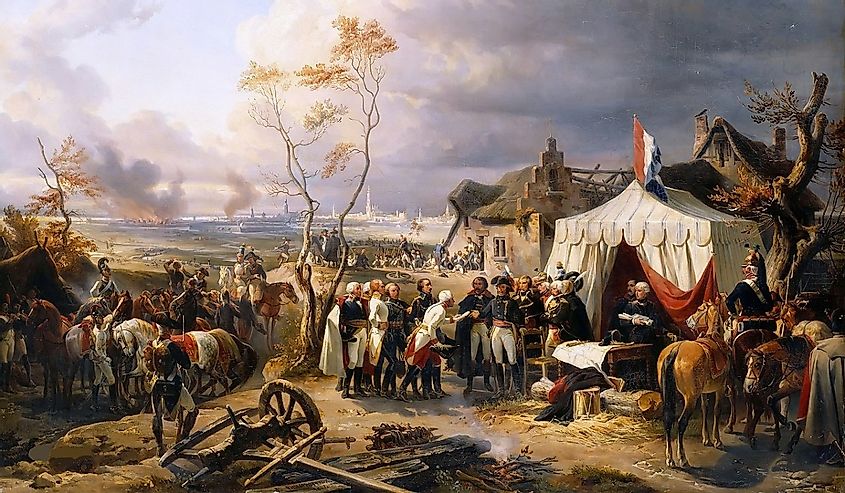
Following the French revolution in 1791, neighboring countries wanted to reinstate their alliance with Louis XVI or take advantage of the chaos by seizing French assets and territories. Many countries were on the cusp of an existential crisis when faced with the revolutions that had occurred in the United States and now France. Lower classes were not accepting of the hierarchy that monarchies imposed.
Putting aside past differences, these monarchies chose to unite and make an example of France in hopes that they could prevent revolutions within their own territories. During the war, Napoleon Bonaparte made his debut which laid the foundation for his eventual takeover of France. The Declaration of Pillnitz was a 1791 statement by Prussia and the Holy Roman Empire against the new French Republic. The Republic responded by declaring war on Austria, which triggered their alliance with Prussia.
1792
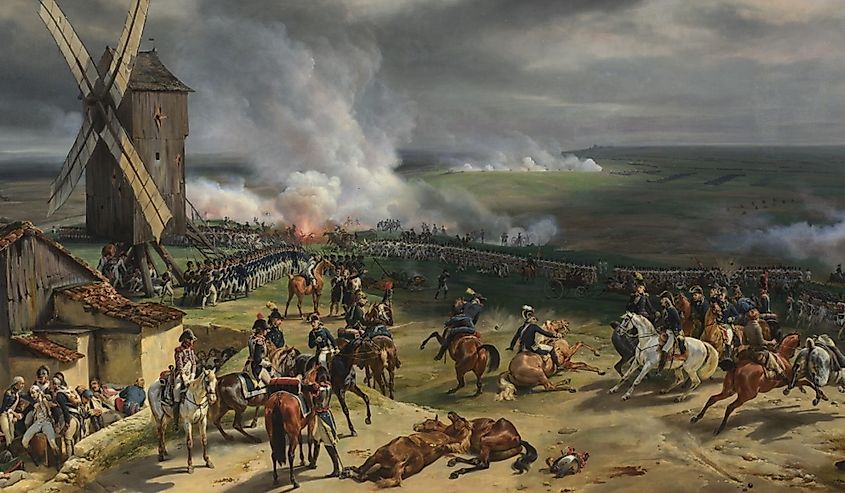
After declaring war on Austria which opened them up to hostilities with Prussia, France encountered their first setbacks. The plan was simple; rouse the local population to rebel again Austrian oppression. Unfortunately, the French army was in disarray, leading to mass desertion and low morale. Prussian invaders led by Charles William Ferdinand crossed the Rhine in July of 1792, which resulted in a more unified French response. As the French King had not yet toppled, this revolutionist momentum sparked the removal of Louis XVI when a mob stormed the Tuileries palace. French artillery proved capable of defending against Ferdinand, which forced the Prussian armies to retreat. By December, French generals managed to occupy Austria as well as capture several cities on the Rhine River.
1793
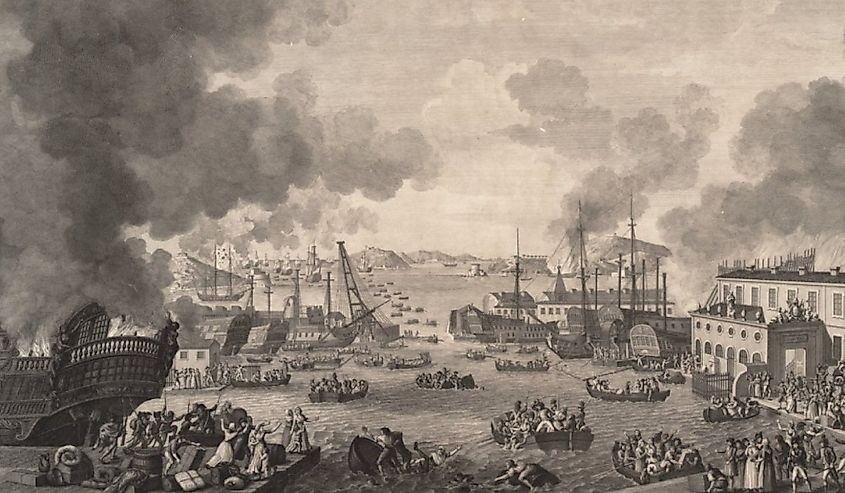
Realizing the massive threat that surrounding nations posed, France initiated a policy of conscription. In part, this was due to European backlash after the former French King was publicly executed at the beginning of the year. Britain and Portugal had now involved themselves with other groups and dubbed the alliance the "First Coalition." France attempted to gain the support of the United States but failed, as the US preferred a policy of neutrality. Between September and December, British efforts to control the region of Dunkirk failed, and Austria suffered more losses on its border with France. Although capable of defending their homeland from these sizable entities, France’s largest trials were yet to come.
1794
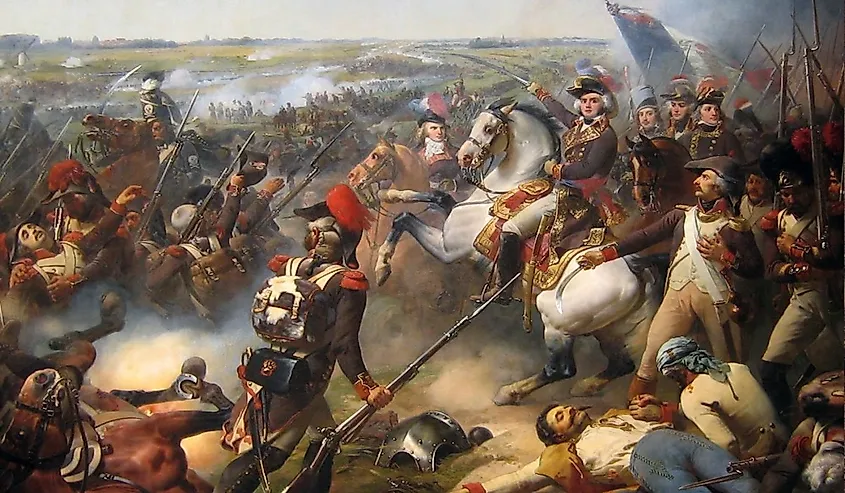
In June of 1794, the Dutch Republic joined Hanover and the Habsburg Monarch in the Battle of Fleurus against France. France outnumbered them, and the First Coalition suffered from a lack of coordination throughout the entire war. France gained the Austrian Highlands and Belgium. They also pushed the Prussians further out of France’s eastern regions and by winter the Prussians had ceased invasion efforts altogether. Furthermore, France succeeded in invading Spanish territories. Britain’s navy controlled the seas, but without inland success by allies, they made few gains. However, this navy did manage to capture several French settlements in the West Indies, and France only recovered Guadeloupe.
1795
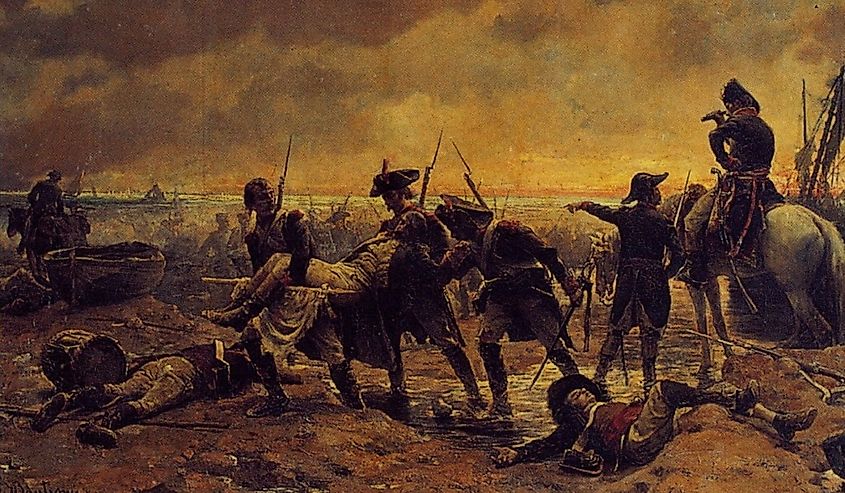
After three years of antagonism, Spain and France agreed to a treaty. Prussia had abandoned its efforts and agreed to sign the Peace of Basel, alongside Spain. At the beginning of 1795, France worked to establish the Batavian Republic puppet state in territories known today as the Netherlands. Britain continued to make attempts at invasion, such as at Quiberon, but this Royalist attempt to unify western France against the Revolutionists failed. Napoleon Bonaparte impressively defended Paris when he thwarted a Royalist plot to overthrow the government. Moreover, France suffered a betrayal by the Royalist General Pichegru, which led to a disaster for the French during the Battle of Mainz.
1796
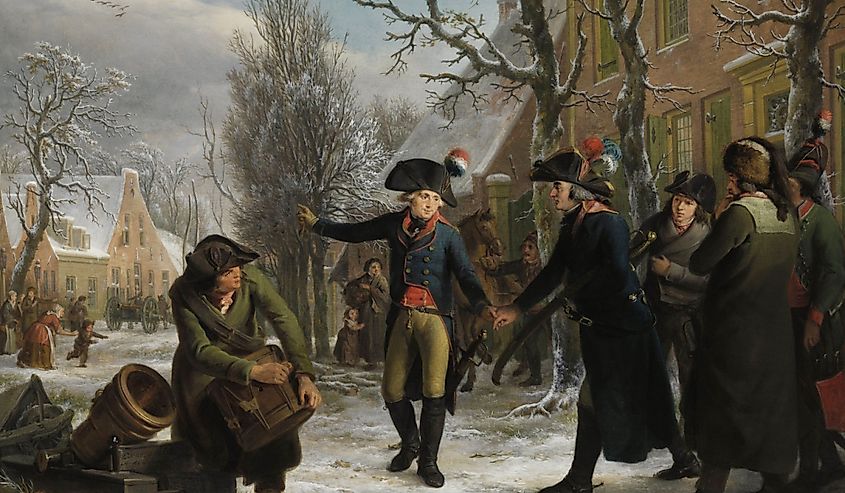
Napoleon Bonaparte appeared on the main stage in 1796, after receiving a promotion for his defense of Paris against usurpers. He brought his troops to Italy in a successful campaign against Sardinia and Austria, allowing France to capture Milan. On the other front, on the Rhine between France and Germany, two other French generals failed to push into enemy territory and had to retreat. Interestingly, a French leader named Louis Lazare Hoche put down a rebellion in Brittany that had been going on for three years. Subsequently, he chose to invade Ireland but failed. The success that France experienced proved that the reign of terror was not entirely necessary. After executing Robespierre, a former leader of the revolution in 1794, the French established the Directory by the end of 1795.
1797
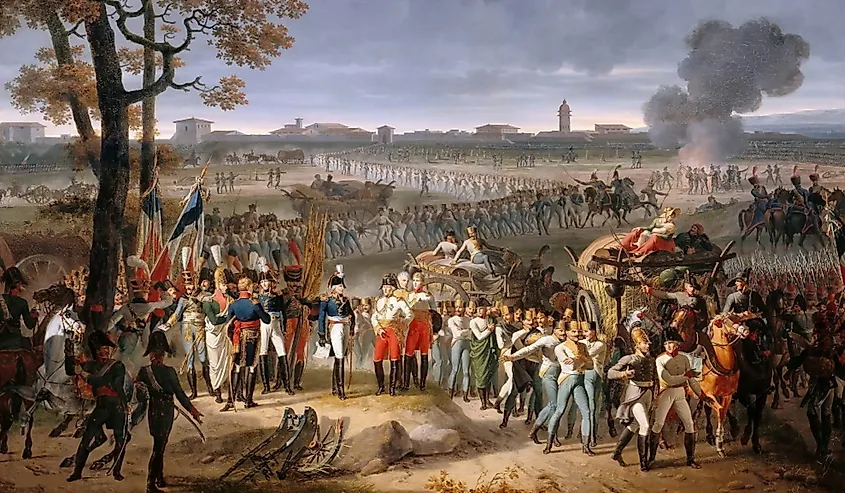
Bonaparte delivered a crushing blow to the Austrians in February of 1797 and managed to capture the city of Mantua as well as 18,000 troops. In October, Austria agreed to peace with France who then gained Belgium, a significant portion of Italy, and the Rhineland. However, Britain refused to make peace with France, which was possibly hindered by France’s failed invasion of Wales in February. This Battle of Fishguard, which ended with France’s surrender, was the only battle fought on British soil during these years. Venice became an intermediary zone between Austria and France, which ended the War of the First Coalition.
The revolutionaries of France were nothing if not audacious; they challenged not just their own monarch, but the monarchs of surrounding nations all at once. These alliances were not hidden from the beginning, and instability in any country was typically met with an incursion. The five years of the War of the First Coalition were hard-fought, and French victory was hard-earned. Furthermore, this war laid the foundation for Napoleon Bonaparte’s trajectory into his role as a self-declared Emperor by equipping him with military success and political ties. Six more periods of coalition wars followed in the next two decades, leaving a path of legend and destruction in their wake.











